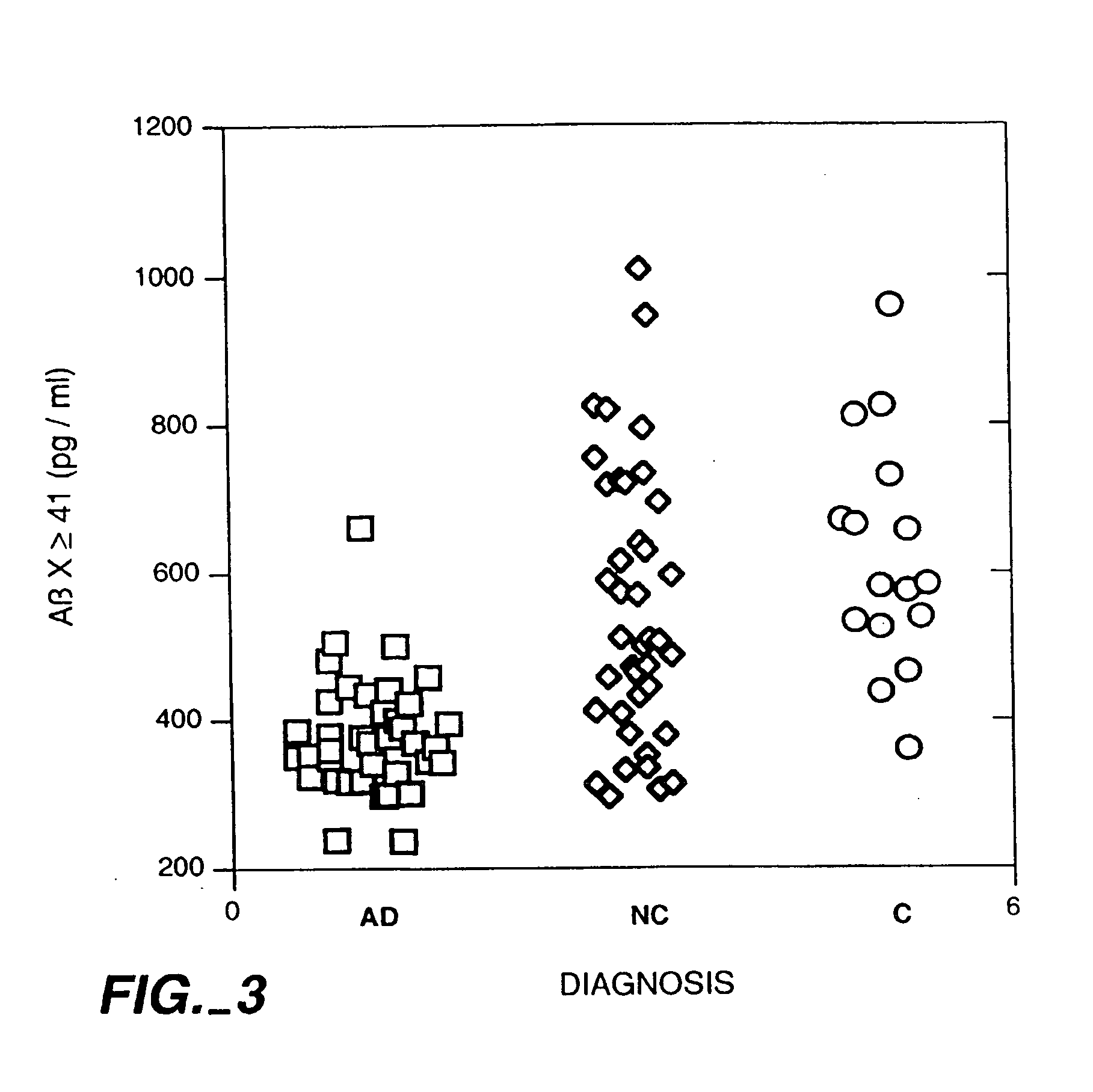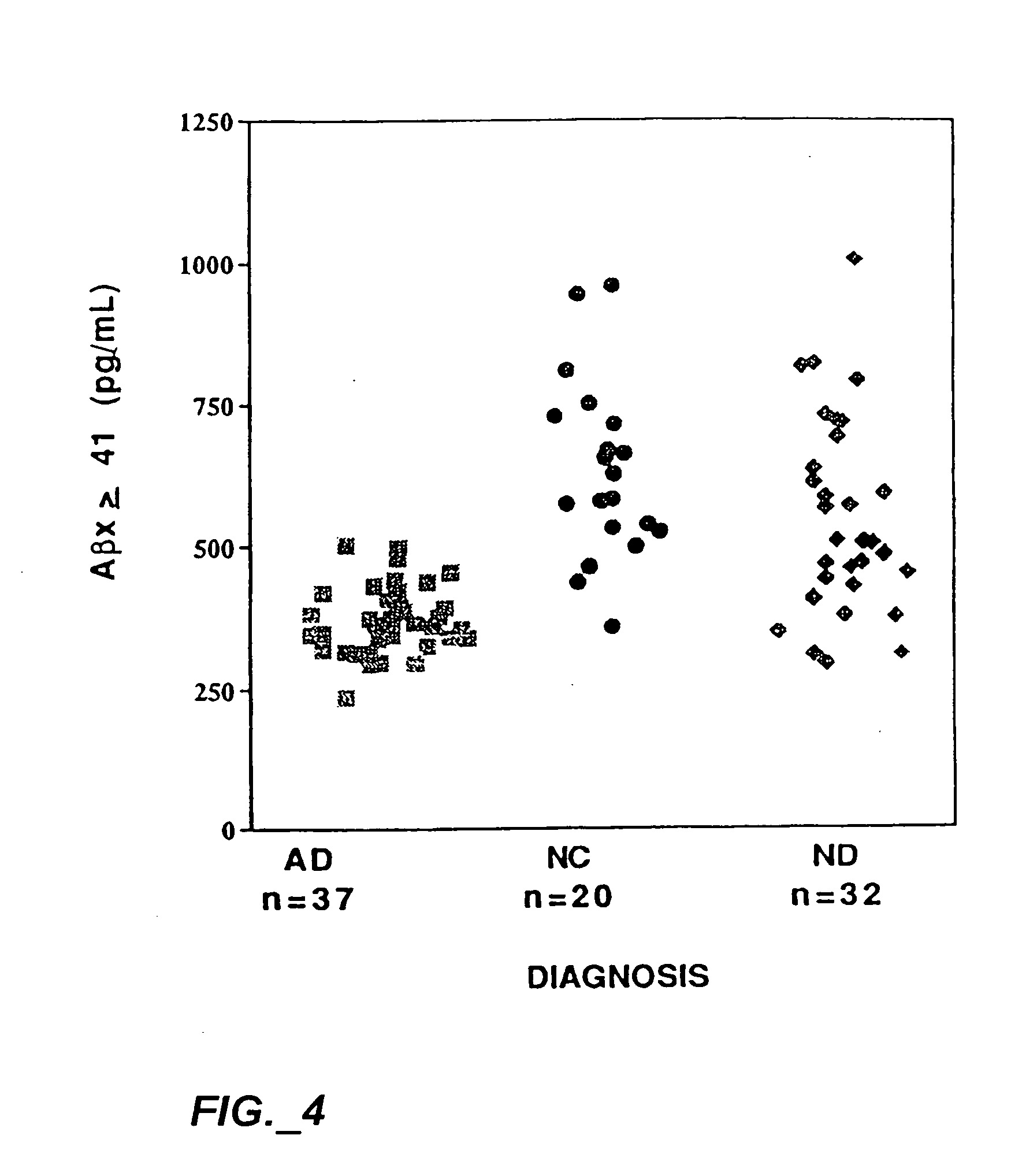Methods for aiding in the diagnosis of Alzheimer's disease by measuring amyloid-b peptide (x->41) and tau
a technology of amyloid-b peptide and amyloid-b peptide, which is applied in the field of methods for diagnosing or monitoring alzheimer's disease, can solve the problems of low levels of a immunoreactivity in bodily fluids, efforts were abandoned, and inability to readily detect a in bodily fluids, and achieve high specificity and sensitivity
- Summary
- Abstract
- Description
- Claims
- Application Information
AI Technical Summary
Benefits of technology
Problems solved by technology
Method used
Image
Examples
Embodiment Construction
[0036] The present invention results at least in part from the discovery that the cerebrospinal fluid (“CSF”) of individuals suffering from Alzheimer's disease generally contains Aβ(x-≧41) in amounts which are in the very low end of the normal range present in the CSF of non-Alzheimer's individuals and, in particular, below about 0.5 ng / ml. This discovery is surprising because the bulk of Aβ deposits in the brain tissue of persons suffering from Alzheimer's disease is Aβ(1-42), and is significantly elevated compared to the amount of Aβ(1-42) in non-Alzheimer's individuals.
[0037] Based on this discovery the present invention provides methods for diagnosing and monitoring Alzheimer's disease. According to one method, a patient sample is first obtained. The patient sample is usually a fluid sample and, preferably, cerebrospinal fluid. Then the amount of soluble Aβ(x-≧41) in the patient sample is measured. A preferred method of measuring the amount is by using the sandwich assay descri...
PUM
 Login to View More
Login to View More Abstract
Description
Claims
Application Information
 Login to View More
Login to View More - R&D
- Intellectual Property
- Life Sciences
- Materials
- Tech Scout
- Unparalleled Data Quality
- Higher Quality Content
- 60% Fewer Hallucinations
Browse by: Latest US Patents, China's latest patents, Technical Efficacy Thesaurus, Application Domain, Technology Topic, Popular Technical Reports.
© 2025 PatSnap. All rights reserved.Legal|Privacy policy|Modern Slavery Act Transparency Statement|Sitemap|About US| Contact US: help@patsnap.com



